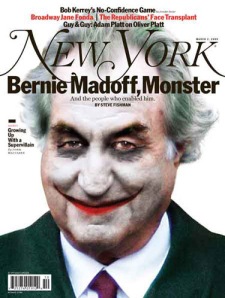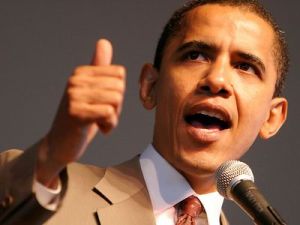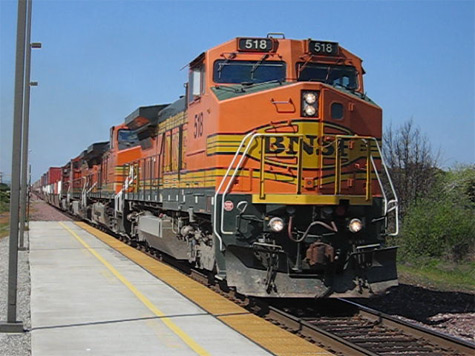 For generations, Toledo and Detroit have been under the economic umbrella of a single industry. We built Cars; this was Jeep country; up the road was The Motor City. For at least the past 20 years, the free market has provided ample signage that the end of the road coming. Now, the federal government is rescuing GM and Chrysler from themselves. Is this a bad thing? Does it mean the end of capitalism and the introduction of American Socialism?
For generations, Toledo and Detroit have been under the economic umbrella of a single industry. We built Cars; this was Jeep country; up the road was The Motor City. For at least the past 20 years, the free market has provided ample signage that the end of the road coming. Now, the federal government is rescuing GM and Chrysler from themselves. Is this a bad thing? Does it mean the end of capitalism and the introduction of American Socialism?
Yes and no. On the one hand, no business should be “too big to fail.” Their very existence as such means we are hostages to their decisions (and we, in effect, insulate them from their own bad decisions). On the other hand, their failure is an opportunity for us to decide what kind of capitalism we want. A number of European countries have very competent and effective Social Democratic governments. For the past decade or more, America has been on the opposite side of the coin, toying with an economic system akin to Social Darwinism.
Social Darwinism is the ethically bankrupt idea that Charles Darwin’s theory of natural selection should be applied to the way people organize their societies. In other words, survival of the fittest should be one of society’s the highest values. Those who have, get to keep it no matter how they got it. Those who have not, get to starve.
In this country, Social Darwinism saw its full flowering during the Robber Baron era of J.P. Morgan, Andrew Carnegie and John D. Rockefeller. These men and their contemporaries twisted Darwin’s theory to justify price collusion, graft and child labor as a means to amass fantastic wealth. Americans like Social Darwinism in theory because it lets us imagine being at the top of the economic food chain, the next Rockefeller. We’re not so enamored with it in practice as we’re much more likely to be the next meal of this brand of capitalism. That’s the situation in which millions of 401-K investors, foreclosed homeowners, and unemployed workers now find themselves.
Now that we as taxpayers are essentially part owners of the economy, we have a short window of opportunity to decide what we want to do with it. Do we want a “Free Range” economy accountable to none but the stockholders and the board of directors? Or do we want something with more constrained by regulation and sized to prevent the excesses of businesses so big their failures can wreak havoc across the country?
Elizabeth Warren, Professor of Law at Harvard Law School, and chair of the Troubled Asset Relief Program created to oversee the U.S. banking bailout, suggests that America has always had boom/bust cycles. After the Great Depression, in order to smooth out the lows and still allow for adequate highs, we introduced financial regulations like the FDIC and Glass/Stiegel. Beginning in the 1980s, the deregulation movement began loosening the chains on the Robber Baron instincts of U.S. Corporations.
In the book and film, The Corporation: The Pathological Pursuit of Profit and Power, author Joel Bakan wonders: Since a corporation is defined as a legal person under U.S. law, what kind of person is it? To assess the “personality” of the corporate “person,” a checklist was employed, using diagnostic criteria of the World Health Organization and the ICD-9-CM, the standard diagnostic tool of psychiatrists and psychologists. The diagnosis was that the corporation is a highly anti-social personality: it is self-interested, inherently amoral, callous and deceitful; it breaches social and legal standards to get its way; it does not suffer from guilt.
Sound familiar?

 Prometheus was a Titan who really liked humans. When he saw them shivering at night and eating raw meat, he knew they needed fire. But the gods did not allow man to have fire. They knew that man would misuse it. Prometheus was sure that the good man did with fire would outweigh the bad, so he stole fire from the gods and gave it to man. Zeus decided to punish Prometheus with trickery. He called Aphrodite to pose while Hephaestus made a clay figure of a woman. Then he brought the statue to life and named her Pandora. Then Zeus gave her a box and told her she was never to open it. Zeus then offered Pandora as a wife to Prometheus.
Prometheus was a Titan who really liked humans. When he saw them shivering at night and eating raw meat, he knew they needed fire. But the gods did not allow man to have fire. They knew that man would misuse it. Prometheus was sure that the good man did with fire would outweigh the bad, so he stole fire from the gods and gave it to man. Zeus decided to punish Prometheus with trickery. He called Aphrodite to pose while Hephaestus made a clay figure of a woman. Then he brought the statue to life and named her Pandora. Then Zeus gave her a box and told her she was never to open it. Zeus then offered Pandora as a wife to Prometheus. I like old movies. To me, they’re time capsules to different eras in history that can teach us a lot about where we’ve been. The downside of history is that it can often show us things we would rather not acknowledge. Ever see Broadway Melody of 1938 with Robert Taylor and Eleanor Powell? I watched it recently. There’s a scene where the newly discovered child actor, Judy Garland, sings a song that includes the word, “darkies.”
I like old movies. To me, they’re time capsules to different eras in history that can teach us a lot about where we’ve been. The downside of history is that it can often show us things we would rather not acknowledge. Ever see Broadway Melody of 1938 with Robert Taylor and Eleanor Powell? I watched it recently. There’s a scene where the newly discovered child actor, Judy Garland, sings a song that includes the word, “darkies.”  Like many of you, I’ve heard a lot of justifications for and arguments against Universal Healthcare. Proponents usually proffer the “we are our brother’s keeper” argument and the possibility of system-wide cost savings, while opponents generally site a lack of trust in government, in human nature, or both.
Like many of you, I’ve heard a lot of justifications for and arguments against Universal Healthcare. Proponents usually proffer the “we are our brother’s keeper” argument and the possibility of system-wide cost savings, while opponents generally site a lack of trust in government, in human nature, or both.  In the early 20th century, Toledo, Ohio was one of the nations key logistics hubs. Over the past 100 years, our investment in the infrastructure that moves goods and services through the region has not kept up with population shifts, market shifts or the competition. Now, in the early 21st century, we have an opportunity to address our deficiencies and re-enlist our natural advantages. Infrastructure investment is at the top of the list in President Obama’s economic stimulus plan. Are we prepared? What are the priorities? Are we making our voices heard?
In the early 20th century, Toledo, Ohio was one of the nations key logistics hubs. Over the past 100 years, our investment in the infrastructure that moves goods and services through the region has not kept up with population shifts, market shifts or the competition. Now, in the early 21st century, we have an opportunity to address our deficiencies and re-enlist our natural advantages. Infrastructure investment is at the top of the list in President Obama’s economic stimulus plan. Are we prepared? What are the priorities? Are we making our voices heard?